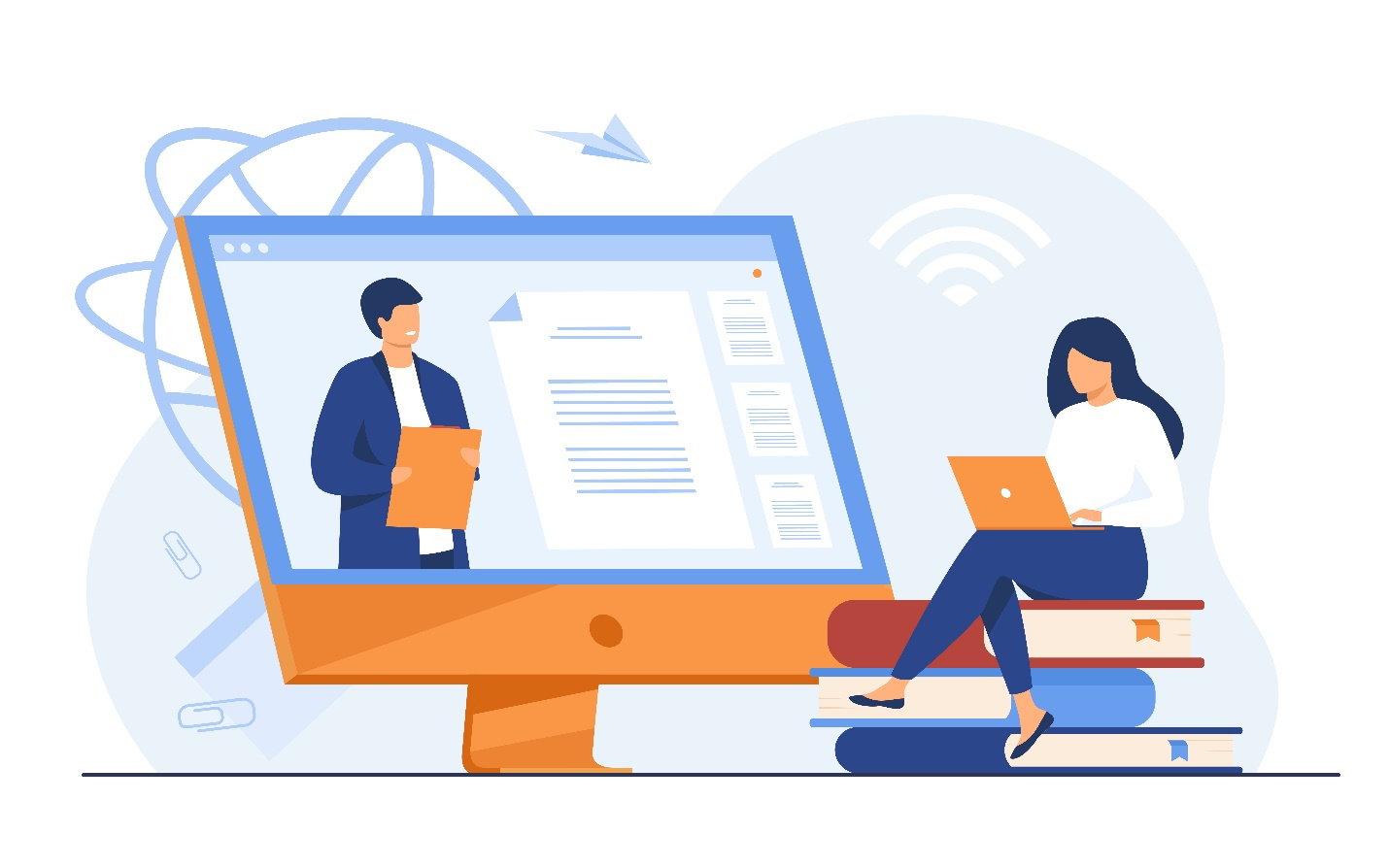SEARCH
RECENT POSTS
Categories
- Agriculture (30)
- Automobiles (18)
- Banking and Financial services (33)
- Consumer Markets (48)
- Defence (6)
- Ecommerce (21)
- Economy (67)
- Education (13)
- Engineering (6)
- Exports (21)
- Healthcare (24)
- India Inc. (8)
- Infrastructure (29)
- Manufacturing (27)
- Media and Entertainment (15)
- Micro, Small & Medium Enterprises (MSMEs) (15)
- Miscellaneous (30)
- Perspectives from India (33)
- Pharmaceuticals (4)
- Railways (4)
- Real Estate (16)
- Renewable Energy (17)
- Research and Development (9)
- Retail (1)
- Services (6)
- Startups (15)
- Technology (53)
- Textiles (6)
- Tourism (13)
- Trade (5)
India’s Edtech Surge: Opportunities in Online Education and Training

The convergence of education and technology, known as Edtech has changed how knowledge is transferred, accessed, and delivered globally. What began as a supplementary tool for classrooms has evolved into a multibillion-dollar industry, making education accessible, inclusive, and more scalable than ever.
India’s journey has been remarkable. With a large young population and deep internet penetration, Edtech became a critical driver for learning and education. COVID-19 functioned as a catalyst, pushing teachers and students to adopt digital learning at scale. India currently supports some of the largest global Edtech firms alongside a growing group of individual educators and informal learning networks. Millions rely on free content to learn various subjects, prepare for competitive exams, and develop new skills. The result is a grassroots digital revolution that is making education accessible and transforming learning, especially in tier II and tier III cities.
India’s growing digital learning ecosystem
India is the second largest market for e-learning after the United States (US). The Indian Edtech industry, valued at Rs. 1,10,198 crore (US$ 12.75 billion) in 2024, is projected to surpass Rs. 5,29,384 crore (US$ 61.25 billion) by 2035, as per Market Research Future. Yet a significant portion of this growth lies not within formal Edtech apps, but in free content, delivered by individual educators on other platforms such as YouTube and LinkedIn.
In 2024, India had more than 886 million internet users, of which 55% belonged to rural areas. This growth is supported by some of the world’s lowest mobile data costs with one gigabyte (GB) of data costing around Rs. 13.98 (US$ 0.16). Digital learning is a routine experience for a large section of the country. Amid this growth, YouTube has emerged as India’s largest informal learning platform, offering flexible, affordable, and relatable educational content.
Learning-related videos generate millions of views every day, with a major share of this traffic coming from small towns. This user base has turned informal online education into a full-fledged learning system.
The rise of India’s informal online educators
A new wave of self-made educators has redefined India’s learning landscape. These creators are not backed by venture capital or institutions; they are former teachers, engineers, or professionals who began uploading videos and built vast student communities.
- Khan GS Research Centre (Khan Sir), based in Patna, has ~24.8 million subscribers. Known for his humour mixed with clarity around educational topics, he has been the go-to creator for government exam preparations among the Hindi audience.
- Physics Wallah, founded by Mr. Alakh Pandey, grew from two million subscribers in 2019 to 13.7 million as of March 2025. Starting with physics tutorials, the channel now provides full-fledged Joint Entrance Examination (JEE) and National Eligibility cum Entrance Test (NEET) preparations and has launched its own learning app.
- LearnoHub, created by Ms. Roshni Mukherjee, offers over 7,000 free videos for classes 6-12 across three channels. Her channels combined have more than three million subscribers and is particularly popular for National Council of Educational Research and Training (NCERT) based learning in science and maths.
- StudyIQ focuses on Union Public Service Commission (UPSC), Staff Selection Commission (SSC), and other competitive exams, offering lectures in multiple Indian languages. Currently, it has around 25 million subscribers across multiple channels and became known for its regional reach and detailed analysis.
- WiFiStudy by Unacademy, popular for its live-streamed lessons and test prep resources, has over 15.7 million subscribers. Its real-time classes and quizzes made it a hit among railway and banking exam aspirants.
The success of these educators spans a range of content categories. Students can benefit from curriculum-aligned channels like LearnoHub, while exam aspirants flock to creators like Khan Sir and StudyIQ. For those looking to improve their fluency in English, channels like Awal Madaan and Learnex offer bilingual coaching.
YouTube has also become a major platform for practical skill-building. From video editing to programming, cooking, financial literacy, and farming techniques, informal educators are enabling millions to learn job-relevant skills for free. This diversity of topics, combined with unlimited access, makes YouTube India’s most inclusive digital classroom.
Why it works in India
One of the primary reasons for informal Edtech’s success in India is accessibility. The content is free, and students need only a basic smartphone and a mobile internet connection to access it anytime, anywhere. This low barrier to entry has made digital learning available even to the economically weaker sections. Another factor is localisation. Bigger Edtech platforms focus on English-medium learners. In contrast, local creators offer instruction in Hindi, Tamil, Telugu, Bengali, and other regional languages. Their relatable tone and cultural references make concepts easier to grasp.
Trust is also central to their popularity. These creators often teach daily or weekly, directly engaging with their audiences and building a sense of continuity. Viewers begin to see them not just as educators but as mentors.
Importantly, the demand for affordable coaching beyond metro cities has fuelled this trend. With offline coaching centres expensive or unavailable in smaller towns, these content creators have emerged as a lifeline for millions of aspirants.
The role of the government in enabling digital learning
Although informal educators operate independently, government programmes have played a crucial enabling role by expanding digital infrastructure.
Launched in 2015, The Digital India initiative aimed to increase internet penetration, encourage digital literacy, and create a knowledge-based economy. Its push for rural connectivity and smartphone adoption indirectly benefitted the informal sector.
Introduced during the pandemic, the PM eVIDYA scheme aimed to unify all online and television-based education initiatives under a single platform. It accelerated the adoption of digital learning methods across states and strengthened the culture of virtual education.
BharatNet, India’s fibre-to-village broadband project, continues to expand connectivity in rural India. As more villages gain access to high-speed internet, more students will be able to engage with online educational content.
The National Education Alliance for Technology (NEAT) is an initiative by the government to provide learning tools through partnerships with Edtech firms. It aims to enhance employability and ensure access to quality education for underprivileged learners.
These programmes have laid the groundwork for a thriving informal education ecosystem, even if they do not directly involve content creators.
The future of informal learning in India
The future of the informal sector of online education in India is exponential. With the growing use of smartphones and the internet, increasing numbers of students will engage in informal sources of effective and affordable learning. The new wave will primarily be dominated by regional content as creators dive deeper into rural areas. New types of content such as shorts, livestreams, interactive quizzes, and AI-learning support are also gaining popularity. Others are experimenting with the hybrid model, in which free YouTube channels are supported by paid courses or apps, to balance between large audiences and financial sustainability. If digital infrastructure and public policy continues to support the Indian informal education ecosystem, it is bound to eventually become a component of that countrywide skilling and learning strategy. What is more important is that these creators are not mere teachers but storytellers, motivators, and role models. They represent a novel and bottom-up approach to education where the learner, and not the institution, is at the core. By so doing, they are contributing towards a new definition of education for an entire generation.
FAQs
How big is the Indian EdTech industry?
India’s EdTech industry was valued at Rs. 1,10,198 crore (US$ 12.75 billion) in 2024 and is projected to surpass Rs. 5,29,384 crore (US$ 61.25 billion) by 2035.
What is driving growth in the Indian EdTech industry?
Growth is driven by deep internet penetration, low mobile data costs, increased smartphone accessibility, and the rise of free, informal learning platforms.
What role does regional language content play in EdTech India?
Regional content bridges learning gaps by making concepts relatable and accessible, especially for rural and non-English-speaking learners.
How are informal EdTech platforms different from formal EdTech companies in India?
Informal platforms like YouTube rely on independent educators, offer free content, and focus on accessibility, unlike formal apps that charge fees and follow structured curriculums.
How does informal online education benefit learners in small cities and rural areas?
Informal education offers free or low-cost access to quality learning material in regional languages, helping bridge gaps where traditional coaching is unavailable or expensive.
















